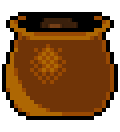

There are also images of Socrates’ wife (perhaps bigamous wife perhaps his mistress), Xanthippe, who was said to have poured water over Socrates in public. She was said to have been Praxiteles’ mistress, and the model for his statue of Aphrodite of Knidos. Phryne was so notorious that we have images of her. Diogenes, however, did not record this story but merely told of her attempted seduction of Xenocrates:Īnd that once the notorious Phryne tried to make his acquaintance and, as if she were being chased by some people, took refuge under his roof that he admitted her out of ordinary humanity and, there being but one small couch in the room, permitted her to share it with him, and at last, after many importunities, she retired without success, telling those who inquired that he whom she quitted was not a man but a statue. She was a courtesan who was acquitted from a charge of impiety after she bared her breasts to the jury.

Phryne’s story, for example, is told in Athanaeus’ Deipnosophists. Possibly these are the more notorious women. The hymn she destroyed unintentionally, but the poem on the Persian war deliberately, because it was unfinished.īut we know nothing more of the sick woman or of Empedocles’ family dynamics.įor some of the women, though, Diogenes gave us more details and other sources are also available. He wrote other poems, in particular the invasion of Xerxes and a hymn to Apollo, which a sister of his (or, according to Hieronymus, his daughter) afterwards burnt. So, she must have taught him, and she was possibly also mother to the King of Scythia, but we don’t know her name (1 Anarchis 101).Įmpedocles was said to have been a physician who cured a woman in a trance, and who also wrote poems: His mother was a Greek and for that reason he spoke Greek as well as Scythian. Perhaps his play was about more than one woman who wrote intemperate riddles in hexameters.Īnacharsis was brother to the King of Scythia. Why the plural? Wikipedia tells us Cleobulus was charged with habitual intemperance. Had a daughter Cleobuline, who composed riddles in hexameters she is mentioned by Cratinus, who gives one of his plays her name, in the plural form Cleobulinae.

Bion, for example, permitted a woman to put an amulet around his neck when he was ill, suggesting perhaps that she was some sort of healer (4 Bion 55). In the first blogpost I described what we know of Pamphila the historian and Hipparchia the cynic philosopher. Eudoxus had three daughters, but we are told only their names, Actis, Philtis and Delphis. He wrote, for example, that Timon had a wife and son, but we are told nothing about them. He tells us of nameless women, wives, daughters and courtesans. Study of Diogenes Laertius’ Lives of the Eminent Philosophers gives us tantalizing snippets of information about women of whom we might never have heard.


 0 kommentar(er)
0 kommentar(er)
